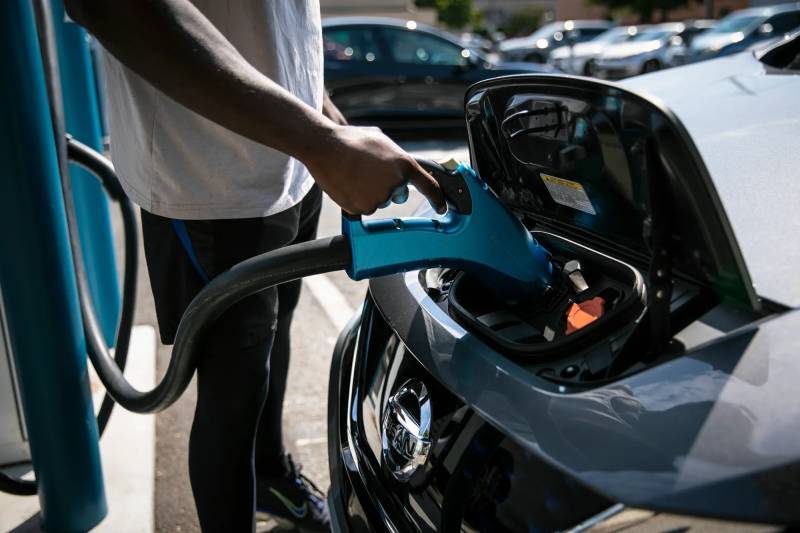But a CalMatters’ statewide analysis of ZIP codes earlier this year showed extreme disparities in electric car ownership. Communities with mostly white and Asian high-income residents have the state’s highest concentrations of zero-emission cars. In stark contrast, California ZIP codes with the largest percentages of Latino and Black residents have extremely low proportions of electric cars — many with no electric cars at all.
Income seems to be the main driver of the disparities, according to CalMatters’ analysis. Most median household incomes in the top 10 ZIP codes for electric cars exceeded $200,000, much higher than the statewide $84,097.
Dosanjh, from the Bay Area car dealership group, said early adopters were often higher-earning people who worked in the technology industry, or at least technology enthusiasts. But these days he said he sees more people buying electric cars to replace their gas-powered vehicles, rather than having them as novelty and luxury items.
More than 1.6 million zero-emission vehicles have been sold in California; one out of four cars sold during the second quarter of this year were zero emissions.
Erich Muehlegger, a professor of economics at UC Davis, said the Clean Vehicle Rebate Project has been “the main workhorse to encourage people to buy zero-emissions vehicles.”
But the rebate program has been subject to inconsistent and inadequate funding, according to CalMatters reporting. Last year the program was flooded with requests for the money, resulting in long waits.
In addition, the various state programs were confusing to Californians. Now they can apply in one place.
“Closing out the (rebate) program has been the plan for some time, and in 2015 the decision was made that when ZEVs reached 16% of new vehicle sales, [that] would be the point where that would happen. We let it run longer (25%) just to ensure we had a healthy market,” Clegern said.
“The state concluded that shifting financing to Californians who may have been left out of the ZEV market because of their income is the right thing to do and also deepens the market,” he said.
The program that will be expanded, Clean Cars 4 All, has assisted households with low-to-middle-income as well as families who live in areas designated as “disadvantaged communities,” with low socioeconomic status as well as environmental risks.
The new program will be rolled out with a revamped financing assistance program for buyers.
The money comes from the state’s greenhouse gas reduction fund, which raises money by selling carbon allowances to pollution-emitting businesses, as well as money from the state’s budget.

